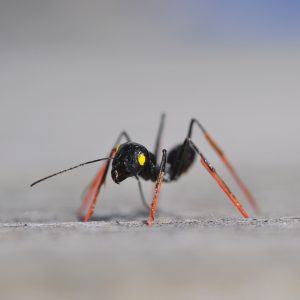Distance measurement in navigating ants
Matthias Wittlinger
Institute for Biology (Zoology), University of Freiburg, Germany
For a navigating animal, the acquisition and integration of information of its travel direction and distance is a crucial prerequisite. Cataglyphis desert ants, the long-legged highspeed runners of North African hot and arid areas, master this with seemingly great ease while they roam through their harsh environment. Recent research has uncovered two different ways in which Cataglyphis ants use cues derived from their legs and from their eyes for odometry purposes. In other words, ants possess an odometer that is realized as a pedometer or stride integrator that receives distance information from the walking apparatus, and further, distance is gauged by integrating optic flow, the apparent motion of the visual world that is experienced en route. In my talk, I will highlight the current understanding of how these integrators are realized and how they might interact on the path integrator level.









You must be logged in to post a comment.